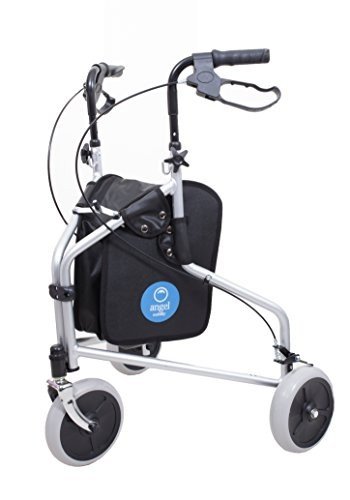A Comprehensive Guide to Buying a Mobility Scooter
Mobility scooters have become a vital tool for lots of people aiming to improve their independence and mobility. With a large variety of designs and functions readily available, selecting the best mobility scooter can be intimidating. This post offers a useful guide to assist consumers browse their alternatives, assess their requirements, and make an informed purchase.
Comprehending Mobility Scooters
Mobility scooters are electric lorries developed for people who experience mobility difficulties. Suggested Studying are particularly advantageous for senior citizens, those with specials needs, or individuals recovering from injuries. Mobility scooters can differ extensively in regards to style, functions, and rates.
Types of Mobility Scooters
Before starting a purchase, it's important to understand the different types of mobility scooters offered:
Three-Wheel Scooters:
- Generally more maneuverable in tight spaces
- Lightweight and portable
- Suitable for indoor usage
Four-Wheel Scooters:
- Offer higher stability and balance
- Appropriate for outside use over numerous surfaces
- Usually have a longer battery life
Foldable/Portable Scooters:
- Designed to be easily transported and kept
- Can frequently fit in the trunk of a vehicle
- Perfect for those who take a trip frequently
Sturdy Scooters:
- Built to accommodate larger people
- Often included more robust features for outside use
- Typically equipped with larger batteries for prolonged variety
Factors to Consider When Buying a Mobility Scooter
1. Weight Capacity
Select a mobility scooter that can support the user's weight. A lot of scooters have a weight limit varying from 250 to 500 pounds. It is essential to make sure that the scooter can accommodate the user conveniently.
2. Range and Battery Life
The range is how far the mobility scooter can travel on a single charge. Normal varieties vary in between 10 to 30 miles. Consider the user's day-to-day activities and pick a scooter with a suitable range.
3. Scooter Dimensions
Consider the size of the scooter, including its weight and measurements. A more compact scooter may be ideal for narrow corridors and tight areas, while bigger models offer additional stability and comfort.
4. Terrain Capability
Examine where the scooter will mostly be used. If the user plans to take a trip mainly on pavement, a lightweight design might be adequate. However, if the user requires to pass through gravel or uneven surfaces, think about a four-wheel scooter built for off-road usage.
Top Features to Look For
Comfort
- Adjustable Seats: Look for scooters with cushioned and height-adjustable seats to make sure comfort throughout travel.
- Armrests: These enhance safety and support while browsing.
Security and Visibility
- Headlights and Taillights: Essential for nighttime use.
- Turn Signals and Reflectors: Improve presence and security while on the roadway.
User-Friendly Controls
- Joystick or Drive Controls: These should be intuitive and simple to control.
- Easy-to-Read Displays: A control board that shows battery life, speed, and distance can boost the user experience.
Additional Features
- Storage Compartments: These use included convenience for bring personal products while on the go.
- Weather Protection: Consider models with rain covers or windshields if utilized in variable weather condition conditions.
Cost Considerations
When budgeting for a mobility scooter, prices can range anywhere from ₤ 500 to over ₤ 5,000 depending upon the model, functions, and brand. Extra costs may consist of:
- Extended Warranty: Protects versus defects and can save money in the long run.
- Devices: Optional functions, such as upgraded seats, lights, or storage solutions.
| Function | Cost Range |
|---|---|
| Fundamental Models | ₤ 500 - ₤ 1,500 |
| Mid-Range Models | ₤ 1,500 - ₤ 3,000 |
| High-End Models | ₤ 3,000 - ₤ 5,000 |
Financing Options
Lots of merchants provide financing strategies, and some city government efforts might supply grants or assistance for those in need. Examine possible financial support with neighborhood resources or mobility service organizations.
FAQs about Buying a Mobility Scooter
What is the distinction in between a mobility scooter and a wheelchair?
Mobility scooters are motorized and allow users to browse individually, while wheelchairs might need physical help or manual operation.
How do I preserve a mobility scooter?
Routine maintenance involves checking battery life, cleaning the scooter, and checking tires and brakes. Always refer to the user manual for particular standards.
Can mobility scooters be utilized indoors?
Yes, numerous designs are created for both indoor and outdoor use. Nevertheless, three-wheel scooters tend to be much better fit for indoor navigation due to their tighter turning radius.
Are mobility scooters covered by insurance?
Some insurance coverage plans cover a portion of the expenses for mobility scooters if they are deemed medically required. Contact your supplier for specific details.
How quick can a mobility scooter go?
A lot of mobility scooters have an optimal speed ranging from 4 to 8 miles per hour. However, the proper pace might differ depending on regional guidelines.
Acquiring a mobility scooter can substantially enhance one's self-reliance and quality of life. By understanding the types, features, and expenses associated with mobility scooters, potential buyers can make well-informed choices that suit their needs and choices. Personalization and thorough research are key to making sure fulfillment with this crucial investment.

